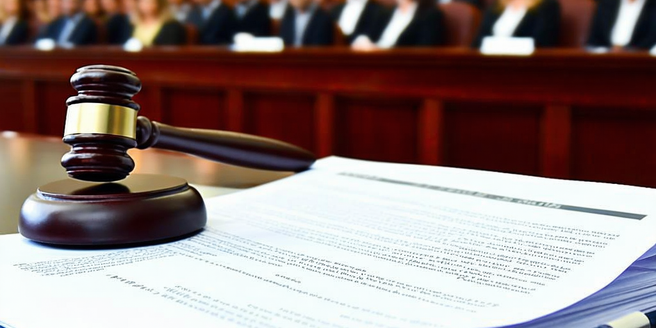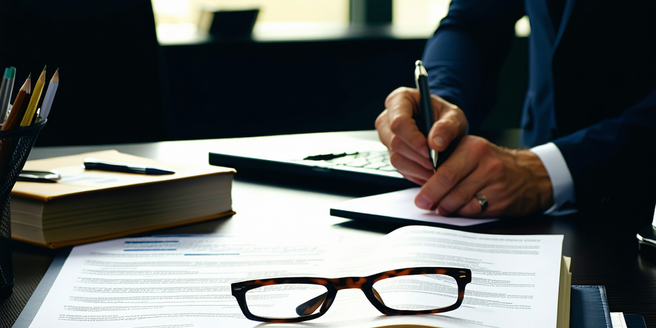
Understanding Product Liability Laws
| Aspect | Description | Example |
| Strict Liability | Liability without fault | Defective airbags |
| Negligence | Lack of reasonable care | Unsecured lid |
| Breach of Warranty | Violation of claims made | Non-functioning appliance |
| Design Defects | Inherent design flaw | Top-heavy SUV |
| Manufacturing Defects | Error during production | Wrongly installed brakes |
| Marketing Defects | Improper instructions | Missing hazard info |
Types of Product Defects
Product liability cases often revolve around three primary types of defects. These include manufacturing defects, which are built into the product by accident. Additionally, design defects exist inherently within the blueprint of a product, rendering it dangerous, like a top-heavy vehicle prone to tipping over. Lastly, marketing defects occur when there are inadequate instructions or warnings, leading to misuse and injury. Each defect type requires specific evidence and expertise to address in court, ranging from engineer insights to user manuals. As these defects can cause significant harm, understanding them is crucial in assessing the strength and scope of a product liability case. With the right legal approach, plaintiffs can effectively navigate the complexities of demonstrating how these defects directly led to their injuries.
Who Can File a Product Liability Suit?
Eligibility to file a product liability suit isn’t restricted solely to the purchaser of the product. Anyone injured by the product can potentially bring a claim forward, whether they’re a family member, a bystander, or someone else entirely. Importantly, the law considers the person harmed, not just the primary buyer. Such inclusivity ensures that broader consumer safety is maintained, holding manufacturers accountable regardless of who’s hurt. This extends protection and recourse to those indirectly affected by defective products. Nonetheless, establishing standing can involve demonstrating the nature of the relationship to the product and the extent of the harm caused. Thus, having clear evidence of the injury’s cause is vital for those not directly involved in the initial purchasing to proceed with a claim.
Criteria for Establishing Liability
Establishing liability in these cases typically hinges on proving that the product was indeed defective and that this defect caused harm to the user. Furthermore, the defect must be shown to be present at the time it left the manufacturer’s control. Plaintiffs must demonstrate that they were using the product as intended or in a foreseeable manner. Each case may involve detailed investigations to collect relevant evidence, such as expert testimonies or product recall histories. Additionally, demonstrating that safer alternative designs could have been used can strengthen a claim considerably. The burden of proof often rests on the plaintiff to establish these criteria, requiring a robust strategy and clear, compelling evidence. Understanding these elements is critical to advancing a successful lawsuit.
Role of Negligence in Claims
Negligence plays a significant role in many product liability claims. It involves proving that the manufacturer or distributor failed to exercise reasonable care in the design, production, or distribution of the product. This could involve errors in quality control, inadequate product testing, or ignoring known risks associated with the product. Demonstrating negligence requires showing how the lapse deviated from industry standards and thus posed an unreasonable risk. In some cases, past incidents involving similar products may be used to highlight the negligence. Plaintiffs may need to bring in experts to explain the technicalities involved and how ordinary care could have prevented the defect. Successfully proving negligence can lead to compensation for damages suffered, underscoring its vital role in holding parties accountable and protecting consumer safety.
The Importance of Expert Witnesses
In product liability cases, expert witnesses often serve as pivotal components of proof. They provide specialized knowledge indispensable to unraveling complex details surrounding how a defect resulted in injury. Such expertise ranges from engineers to safety experts who can elucidate technical aspects of the product’s design or manufacturing process. These technicalities, often beyond the comprehension of laypersons, require expert translation. These experts bolster the credibility of the case by breaking down sophisticated concepts into understandable facts that align with the core allegations. Their testimony can substantially impact a jury’s perception by presenting an authoritative view. Having well-established expert witnesses can mean the difference between a favorable verdict and having your claim dismissed due to lack of evidence.
Statute of Limitations in Product Cases
Every product liability suit is subject to a statute of limitations, which sets a firm deadline by which a lawsuit must be filed. Missing this deadline typically results in losing the right to legal recourse, emphasizing the need for prompt action following an injury. These time constraints vary depending on the jurisdiction and specifics of the case, from two years to four or more in some instances. Start times often depend on when the injury occurred or when it was discovered, highlighting the concept of discovery of harm. Understanding these timelines is critical, and consulting legal experts swiftly can ensure that potential claims remain viable. Being aware of these limitations is essential to effectively navigating the legal process and securing rightful compensation.
Steps to Take After an Injury
Following an injury from a potentially defective product, there are crucial steps to take that can impact your case’s viability. First, seek immediate medical attention to document the injuries sustained. It’s important to act quickly to prevent any delays in your claim process. Preserving the product and its packaging can serve as essential physical evidence in court. Reports or testimonies from any witnesses should be collected promptly as well. It is advisable to document the incident thoroughly and reach out to legal counsel experienced in product liability cases. Avoid discussing the case extensively with third parties to protect confidentiality and strategic positioning. By following these measures, you can effectively lay the groundwork for a legal challenge that is supported by solid evidence.
Gathering Evidence for Your Case
Evidence is the backbone of any product liability case, requiring both quality and quantity to sway legal outcomes. Every piece, from the defective product itself to detailed medical bills, builds the narrative of how the product fails in its duty of care. Photographs, videos, and maintenance logs can provide visual representation supporting claims of design flaws or missing safety features. It is also essential to gather expert opinions to further validate why the product was unreasonably dangerous. If possible, collecting historical data on similar defect reports can indicate a pattern of negligence or oversight. Organizing this evidence meticulously will serve a crucial role in establishing the legitimacy of the suit and its potential success.
Choosing the Right Legal Representation
The attorney you choose to represent your product liability case can significantly affect its outcome. Engaging with legal counsel that specializes in product liability law can provide the needed expertise and resources. Look for attorneys with a strong track record, as demonstrated by successful verdicts or settlements in similar cases. They should offer comprehensive guidance on the intricacies of filing and procedural deadlines. An experienced lawyer will actively facilitate evidence gathering, liaising with expert witnesses, and navigating complex legal challenges. Additionally, open communication with your attorney is crucial to stay informed throughout the legal process. Ensuring your legal counsel possesses the requisite experience and dedication is key to moving forward confidently in your pursuit of justice.

